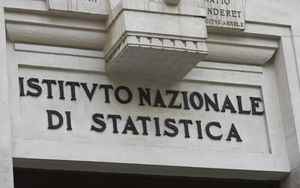(Finance) – In January, inflation shows a clear slowdown, falling to +10.0%. The descent – explains theISTAT – affected by the performance of the most volatile components of the consumer price index, strongly conditioned by the trend reversal of regulated energy goods (-12.0% on an annual basis). However, tensions on consumer prices remain widespread for various product categories, such as processed food, other goods (durable and non-durable) and housing services, which contribute to the slight acceleration of the core component.
In January 2023, the statistical institute estimates that the national consumer price index for the entire community (NIC), gross of tobacco, recorded an increase of 0.1% on a monthly basis and of 10, 0% on an annual basis, from +11.6% in the previous month; the preliminary estimate was +10.1%.
The decline in the inflation rate is mainly due to the sharp slowdown on a trend basis in the prices of energy goods regulated (+70.2% to -12%) and, to a lesser extent, those of unregulated Energy (+63.3% to +59.3%), Unprocessed Food (+9.5 % to +8.0%) and recreational, cultural and personal care services (from +6.2% to +5.5%); the effects of these trends were only partially offset by the acceleration in the prices of durable goods (from +6.4% to +6.8%), non-durable goods (from +6.1% to +6.7 %) and services relating to housing (from +2.1% to +3.2%).
L’underlying inflationnet of energy and fresh food, accelerated from +5.8% to +6.0%, while that net of energy goods alone remained stable at +6.2%.
On an annual basis, the prices of goods show a slowing profile (from +17.1% to +14.1%), while that relating to services shows a slight increase (from +4.1% to +4.2% ); therefore the negative inflationary differential between the latter and the prices of goods is reduced (from -13.0 in December to -9.9 percentage points).
The trend dynamics of the prices of foodstuffs is attenuatedfor home and personal care (from +12.6% to +12%), while on the contrary that of products with a high frequency of purchase is accentuated (from +8.5% to +8.9%) .
The cyclical increase in the general index is mainly due to the prices of housing services (+1.6%), processed food (+1.3%), durable goods (+1.1%) and non durable (+0.7%), unprocessed food (+0.6%) and unregulated energy (+0.5%); a containment effect instead derives from the drop in the prices of regulated Energy (-25.7%) and those of Services relating to transport (-1.7% due to seasonal factors).
Acquired inflation for 2023 it is +5.2% for the general index and +3.2% for the core component.
The harmonized index of consumer prices (HICP) decreases by 1.5% on a monthly basis, due to the start of the winter sales of clothing and footwear which the NIC index does not take into account, and increases by 10, 7% on an annual basis (a slowdown from +12.3% in December); the preliminary estimate was +10.9%.
The national consumer price index for blue-collar and white-collar households (FOI), net of tobacco, recorded an increase of 0.1% on a monthly basis and 9.8% on an annual basis
